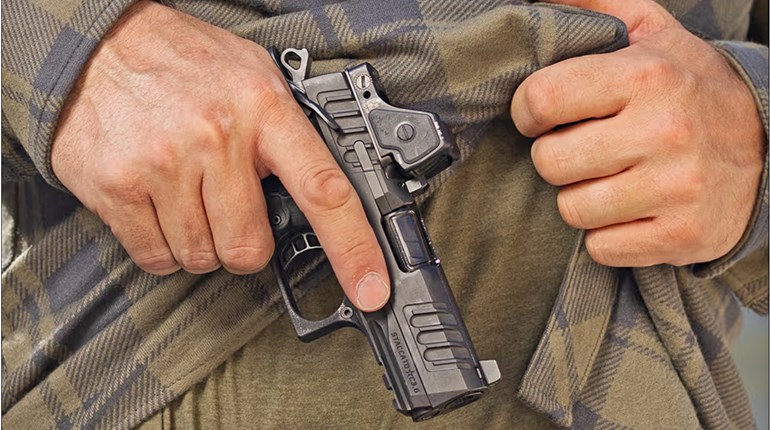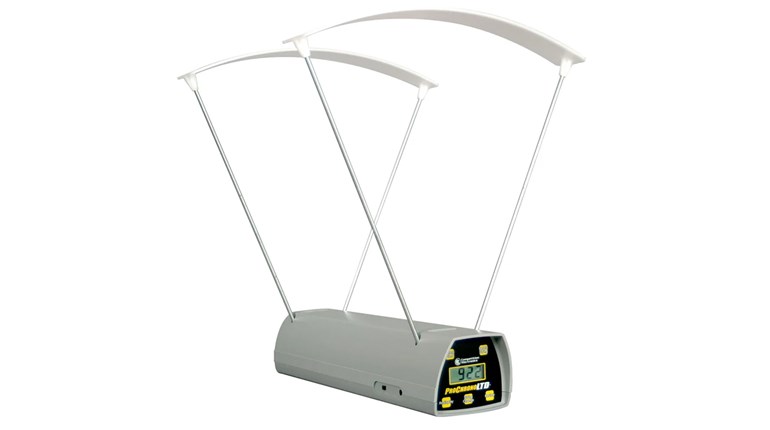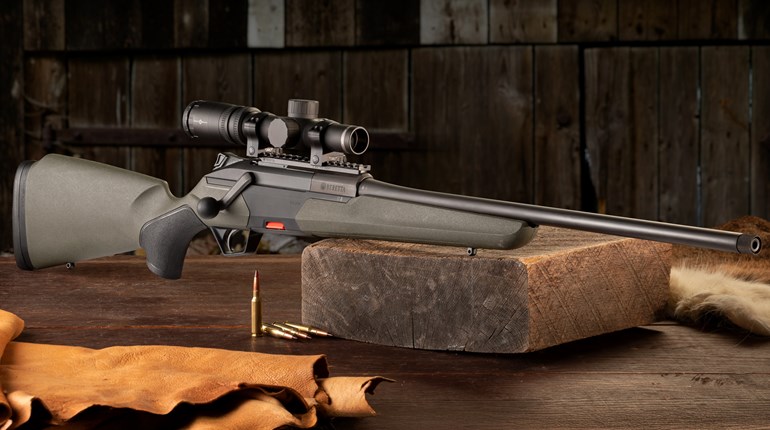
The new 8.6 BLK cartridge looks to be a step closer to the general-purpose role the .300 BLK was originally intended to fill.
When Advanced Armament Corporation (AAC) introduced the .300 AAC Blackout (BLK) cartridge a decade and a half ago, it started something. Prior to the BLK, subsonic, centerfire-rifle shooting was mostly a handloading-only proposition with cartridges never intended to deliver subsonic performance. Shooters flocked to the subsonic and supersonic capabilities of the .300 BLK, and I think the cartridge is largely responsible for the elevated interest in suppressors and suppressed shooting. However, from a capability standpoint, it pales in comparison to the new 8.6 BLK.
As popular and influential as the .300 BLK is, it’s not perfect. In its supersonic form, it offers little-to-no improvement when compared with the .223 Rem./5.56 NATO. Though it fires a larger-diameter and heavier bullet, its lower velocity hinders terminal performance and produces uninspiring trajectories. It’s also possible to chamber some .300 BLK loads in a .223 Rem./5.56 NATO rifle. If that happens—and you shoot the rifle—disaster can follow. Though the .300 BLK is fun to shoot and does have short-range tactical applications, it’s a long way from what anyone would consider general-purpose applicable.
Kevin Brittingham—the original owner of AAC—designed the .300 BLK, and Remington handled the launch after that company acquired AAC. After Brittingham left AAC/Remington, he worked at SIG Sauer for a short time, and then started his own firearm company called “Q.” Though Q might seem an odd name for a firearm manufacturer, you probably remember the Q Division in the James Bond movies that developed all of 007’s cool tools and weapons. The real Q also develops some cool tools, like the Honey Badger and the Fix firearms, and Q is from where the 8.6 BLK cartridge comes.
The 8.6 BLK cartridge case is based on a 6.5 Creedmoor case, but it is substantially shortened and then necked up to accept a .338-caliber (8.6 mm) projectile. Q’s goal with the 8.6 BLK was to provide better terminal performance and more reach than available with the .300 BLK at subsonic and supersonic velocities. In other words, Q wanted a rifle cartridge with sub- and supersonic capabilities better suited to the general-purpose role.
Obviously, regardless of the cartridge, subsonic velocities are similar and usually run around 1,050 fps. But, the 8.6 BLK uses a much heavier projectile than the .300 BLK, which translates to more energy: it has a subsonic energy advantage of around 36 percent beyond the .300 BLK. The real advantage of the 8.6 comes with supersonic shooting, where it has 50-percent more energy than the .300 BLK and—depending on the load—hits a lot harder than the new 338 ARC. But, there’s more to the 8.6 BLK than conventional, linear muzzle energy.
Another advantage of the 8.6 BLK has nothing to do with the cartridge at all, but everything to do with the barrel. Unlike .300 BLK and 338 ARC ammunition, which are designed to work with a rifling-twist rate of 1:8-inch, the 8.6 BLK uses a rifling-twist rate of 1:3-inch. This is an incredibly fast twist rate, but what’s it for? Well, it helps better stabilize bullets that are about the size of your little finger, but it also significantly enhances terminal performance.
Bullets have two velocities: linear and rotational. Rotational velocity comes into play with bullet stability in flight, but also impacts terminal performance. This is why it’s so hard to get .300 BLK and 338 ARC subsonic rifle bullets to upset more than just a little bit—the energy needed to do the work is primarily coming from the bullet’s linear velocity. With a 1:3-inch twist, the rotational velocity of the 8.6 BLK bullet is about 2.6 times faster. Think of it as increasing the bullet’s centrifugal force. This helps the bullet to better open/upset/expand at supersonic velocities, and especially at subsonic velocities where linear velocity is limited.
I don’t have a tremendous amount of experience with the 8.6 BLK, but I have shot it out of Q’s bolt-action Fix, a semi-automatic Wilson Combat AR-10 and the Q Boom Box in semi- and full-automatic. Reliability—even in full auto—was flawless from standard .308 Win. magazines, and precision hovered right around the magical MOA mark. I also got to see how projectiles from an 8.6 BLK perform terminally at both subsonic and supersonic velocities. Based on my experience with testing thousands of bullets in various test media, there’s no question a 1:3-inch twist makes a real difference. With the prototype 8.6 BLK bullets from Lehigh Defense, complete bullet upset—petal separation—occurred at velocities as slow as 750 fps.
What this means is that with the right bullet, at subsonic velocities the 8.6 BLK can deliver terminal performance beyond 300 yards. By any modern measure, that’s insane. Granted, at long range you’ll have substantial drop, but if you can get the hit, the bullet will work. At supersonic velocities, you can see measurable bullet upset out as far as 500 yards. And that’s the true advantage of the 8.6 BLK. With such a fast rotational velocity, you can achieve true general-purpose application.
Currently, the best source for factory-loaded 8.6 BLK ammunition is Gorilla Ammunition. The company offers a 210-grain Barnes TSX bullet traveling at 1,925 fps, a 300-grain Sierra MatchKing at 1,050 fps, a 285-grain fracturing bullet at about 1,000 fps and a 190-grain fracturing bullet at 1,937 fps. All these advertised velocities are from a 12-inch, 1:3-inch twist barrel, and boxes of 20 rounds retail for around $50 to $60, which is competitive with premium .308 Win. ammunition prices. Gorilla also offers several 8.6 BLK firearms.
What does the future hold for the 8.6 BLK? It’s too early to say, but I believe as more shooters learn its capabilities it will ultimately receive Sporting Arms and Ammunition Manufacturer’s Institute (SAAMI) adoption. When that happens, we will most likely begin to see more firearms and ammunition become available for it. Though I’ve never been a huge fan of the .300 BLK, I’ve already got my 8.6 BLK on order. I’m not going to wait for SAAMI or anyone else to tell us this cartridge is a good idea. I’ve seen enough about the 8.6 BLK to know a good thing when it comes along.






































